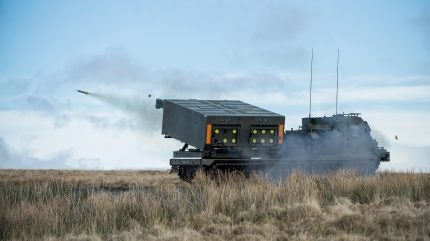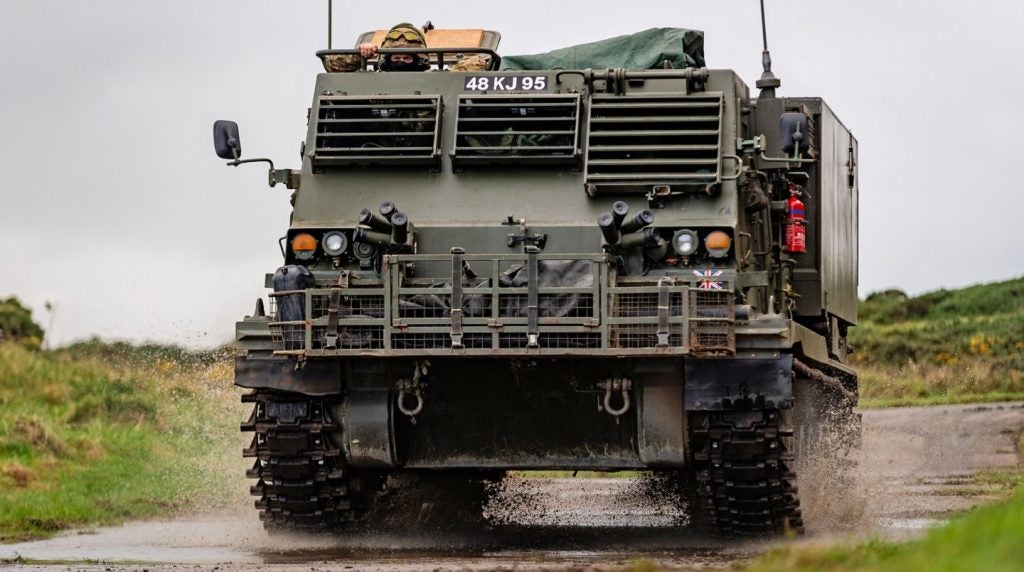
The British Army looks set complete a surge of M270 multiple launch rocket systems (MLRS) in its inventory before the end of the decade, with the revelation that dozens of additional modernised launchers are being acquired to more than double the future fleet.
Currently, the British Army maintains 29 M270 MLRS platforms, which fire the Guided Multiple Launch Rocket System (GMLRS) munition to provide long-range mobile fires capability out to distances of 70km.
It was reported in September 2022 that the UK was seeking to acquire additional launchers from allies, including mothballed vehicles in museums or acting as gate guards.
However, Army Technology can reveal that an additional 31 M270 MLRS launch vehicles have now been acquired for use by the British Army, recovered from various disposal activities as well as other nations’ fleets.
Included in those were MLRS launchers promised by Norway to the UK as part of a trilateral security package with Ukraine. The ex-Norwegian M270s are currently in storage in the UK before being sent to the US for an upgrade, likely to the A2 standard.
Speaking at the time, Norwegian Defence Minister Bjørn Arild Gram said Norway had “agreed with the British that they will receive Norwegian weapons to be able to ship as part of their MLRS to Ukraine”.
The three Norwegian MLRS were known to require significant modernisation in order to bring them into an in-service state.
In addition, a further two risk reduction launchers are currently on the production line, and a total of 61 M270s are on order, with a further 15 M270 MLRS expected to go on contract in 2025 to meet the British Army’s requirements of 76 platforms.
It is expected that all UK M270 MLRS will be delivered by the end of 2029.
British Army long-range fires bounce back
The significant increase in M270 numbers in British Army service could reorder much of its existing long-range fires formations, which have been decimated followed the donation of more than half of its AS90 Braveheart 155mm self-propelled howitzers (SPH) to Ukraine.
An interim buy of a 14 Archer 155mm SPH from Sweden looked to plug part of the capability gap, which still loomed large with the planned RCH 155 development with Germany still years away from delivering a platform into UK service.
With the build-up of M270 MLRS in the British Army, it is possible that the service will find itself in a stronger position with its indirect fires than had previously been considered.

A drive to recapitalise long-range fires capabilities has been prevalent across Nato countries in recent years, as observations of the ongoing Ukraine-Russia war highlight the need to build up long-range strike fleets, including 155mm artillery and MLRS systems.
It was previously reported by Army Technology in 2022 that the UK was to upgrade nine of its M270 MLRS fleet to the A2 variant in a $32m process, which will see a new engine fitted and a redeveloped cabin to be configured in much the same way as the M142 High Mobility Artillery Rockets Systems (HIMARS) launchers.
The same year, M270 OEM Lockheed Martin disclosed that it was expected to completed the upgrade of an unspecified number of UK MLRS by 2026.
M270: a tracked HIMARS with twice the payload
The MLRS launcher unit comprises an M270 launcher loaded with 12 rockets, packaged in two six-rocket pods. The launcher, which is mounted on a stretched Bradley chassis, is a self-loading and self-aiming system.
Without leaving the enclosed cab, the crew of three (driver, gunner, and section chief) can fire up to 12 MLRS rockets in fewer than 60 seconds.
Entering service in 1990, the British Army’s recapitalised M270s are now expected to remain operational until at least 2050.
The US maintains a sizeable stock of surplus unserviceable M270A0 MLRS launchers at its Red River boneyard, which were also utilised by the US Army’s own M270 fleet upgrade programme.



